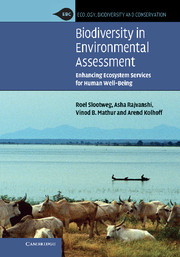Book contents
References
Published online by Cambridge University Press: 05 July 2014
- Type
- Chapter
- Information
- Biodiversity in Environmental AssessmentEnhancing Ecosystem Services for Human Well-Being, pp. 398 - 433Publisher: Cambridge University PressPrint publication year: 2009



